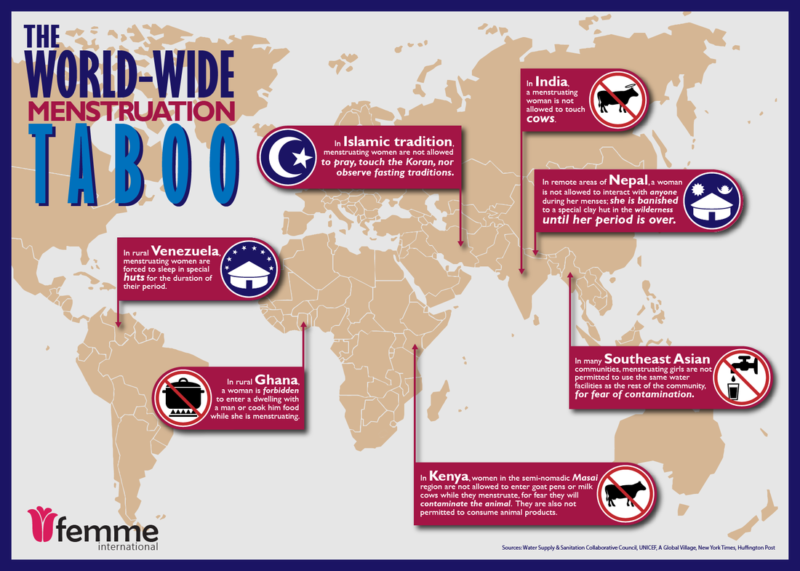For a country fast propelling at an astounding growth rate of 8 per cent, we are woefully deficient when it comes to basic sanitary rights for women. Debates on menstruation are avoided like the plague and superstition blinds most from making any progressive leaps in the area. According to the 2011 Census, 89 per cent of the nation’s population lives in homes that lack toilets. It is undoubtedly a daunting task, not to mention extremely unsafe, for women to take control of their menstrual cycles with dignity. One out of five girls drops out of school when their periods begin owing to lack of basic infrastructure. A report by AC Nielsen and Plan India found that in 2010 that out of the 355 million reproductive age women in India, only 12 per cent could access modern products for feminine hygiene. Most women use old rags instead and are exposed to reproductive tract infections.


In December 2015, under the aegis of the Swachh Bharat Mission, National Guidelines for Menstrual Hygiene Management were officially promulgated. While the initiative was praise worthy, it comprised of mere guidelines to follow, with no legal obligation to be adhered to. It waxes eloquent about creating awareness, but provide little to no ideas about the execution of the same. The guidelines encourage installation of incinerators in schools for adequate waste disposal and are heavy on infrastructural allocations. Scant attention is paid to the social stigma, archaic cultural norms and the economic insufficiencies that prevent women from effectively managing their menstrual cycles.
The key performance indicators listed by the guidelines paint a similar picture. They focus on the number of training programs initiated and ignore evaluating the efficacy or success of said programs or platforms. There is emphasis on the number of schools with incinerators, stocks of sanitary pads, prescribed functional toilets, stipulated curriculum on menstrual health, and even focal point trained teachers, but no effective measurement barometer to gauge the societal impact of the guidelines. They lay down no concrete measures to stem the flow of the cultural venom associated with menstruation.
Educational drives targeting both boys and girls will make women accept menstruation with dignity and grace, help them talk about it freely without shame. Public private partnerships promoting behaviour change education and scaling existing sanitation projects may be helpful in this regard. Private players may be incentivized to take up projects in this policy area where they can act as a direct provider of services or support a small scale manufacturer regionally. Menstrupedia is an online platform which started as a comic strip but has evolved into a benchmark for menstrual education. The Great Wash Yatra is held in five Indian states and has a Menstrual Hygiene Management Lab where women discuss feminine hygiene.
Collective and individual action is a crucial prerequisite for establishing efficient menstrual health management machinery in India. Dismissing anachronistic traditions for contemporary practices in hygiene is the way forward.
About the Author
Sabhya Kumar is a Final Year student at Lady Shri Ram College for Women. She takes an active interest in writing and debating.


Looking forward to your participation for #BlogWithUs, you can mail us your entries at writeWithUs@csrindia.org.
Discuss this article on Facebook




